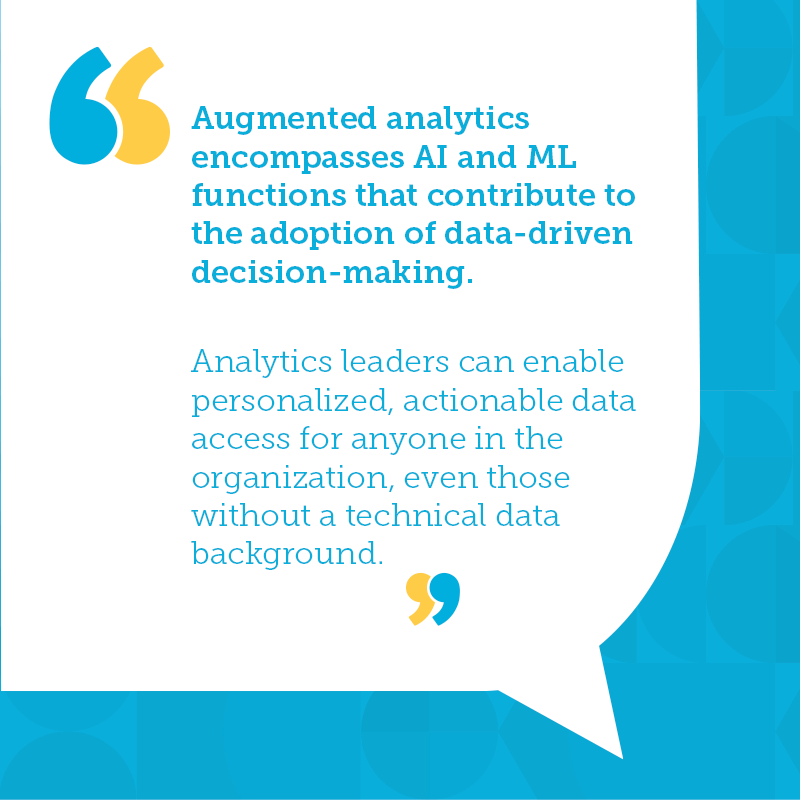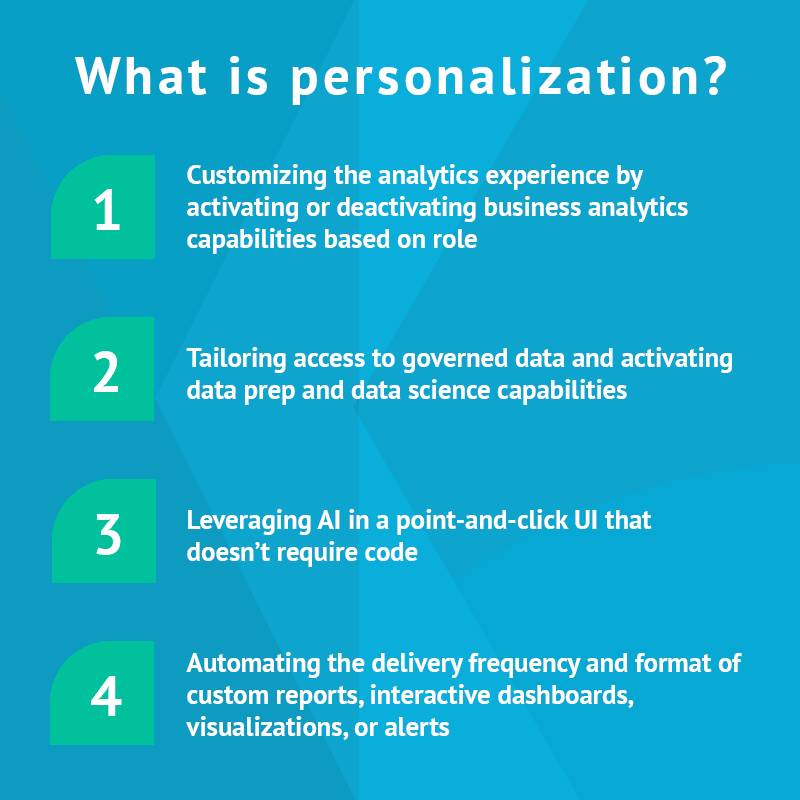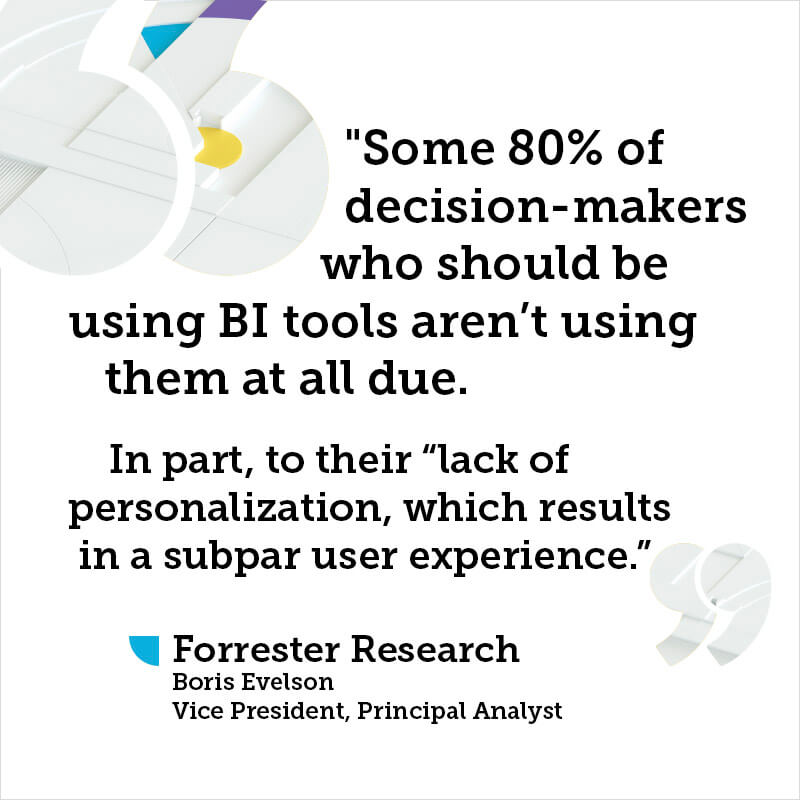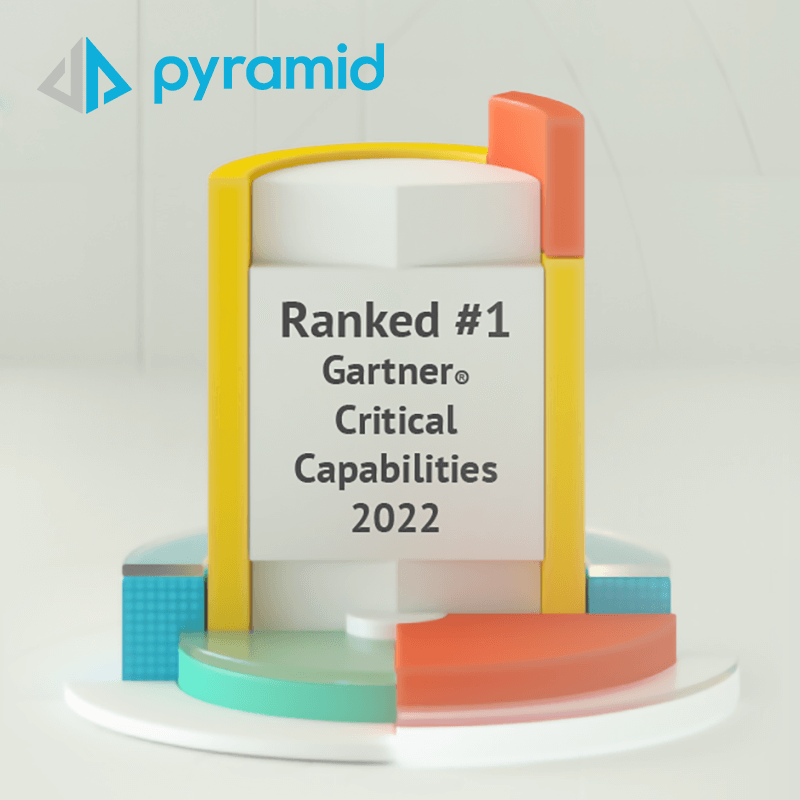When I say “personalizing” the experience in the context of augmented analytics, I’m talking about:
- tailoring the analytics experience by activating or deactivating business analytics capabilities based on role;
- tailoring access to governed data and activating data prep and data science capabilities;
- leveraging AI in a point-and-click UI that doesn’t require code;
- automating the delivery frequency and format of custom reports, interactive dashboards, visualizations, or alerts by role, or embedding them into the systems and applications people use to do their daily work so they can use data to make more intelligent decisions.
The arrival of augmented analytics is as timely as it is critical. According to Forrester, only 1 in 5 organizations is using BI in any meaningful way today. A lack of personalization within BI platforms means business professionals simply aren’t using these tools in the ways they should or aren’t using them at all.
BI and analytics leaders can use personalization to make decision intelligence something anyone can use, driving adoption beyond the people with technical skills. Personalizing the data-driven decision-making experience enables anyone to use data seamlessly within their existing processes and systems to aid their daily decisions.
Why Personalized Decision Intelligence Is So Important
First, we should highlight the core aspects of augmented analytics. Augmented analytics uses machine learning and artificial intelligence techniques to transform how analytics content is developed, consumed, and shared. With augmented capabilities, data and analytics leaders can truly personalize experiences for all types of people, many of whom will get value out of the organization’s data resources for the very first time.
In this way, decision intelligence platforms can deliver the right kinds of insights to a spectrum of people within an organization. They use more consumer-friendly capabilities to make this possible, such as:
AI and ML can also assist with data preparation, insight generation, model selection, and insight explanation. With these capabilities, people can acquire the information they need via governed self-service and can interact with the data in a way that seamlessly contributes to their daily decisions.
Adapting Tech to Humans, Not the Other Way Around
In terms of strategic value, the Decision Intelligence Platform employs augmented analytics in a way that tailors the analytics environment to the individual—not the other way around. This represents a stark contrast to traditional BI, where countless hours and dollars have been spent forcing personnel to adapt to BI software.
The use of AI in augmented analytics means personalization itself is growing more sophisticated. Augmented analytics enables data leaders to “personalize BI beyond just ‘producer’ and ‘consumer’ personas,” as Forrester describes. In fact, Forrester identifies 12 different core activities and seven user personas that decision intelligence can support through augmented analytics. But use cases aren’t limited to those activities and personas alone, especially as augmented analytics evolves.

















